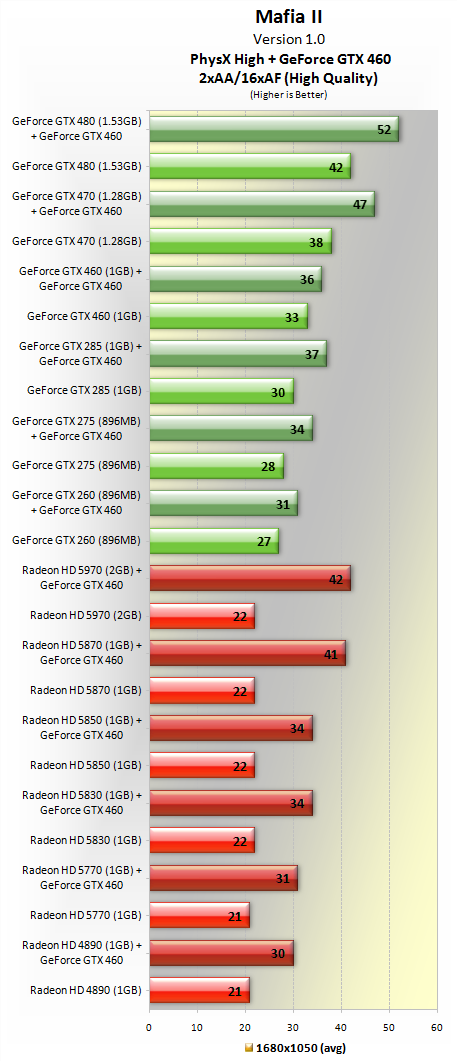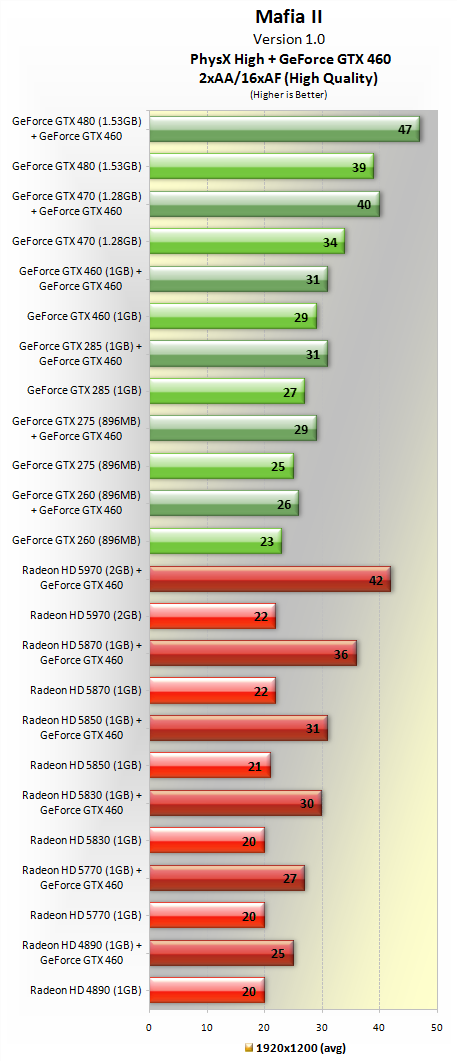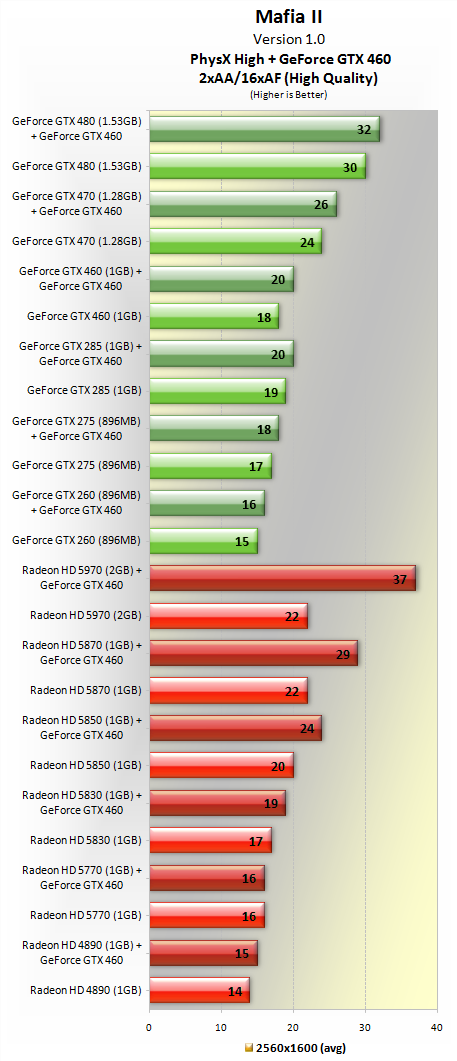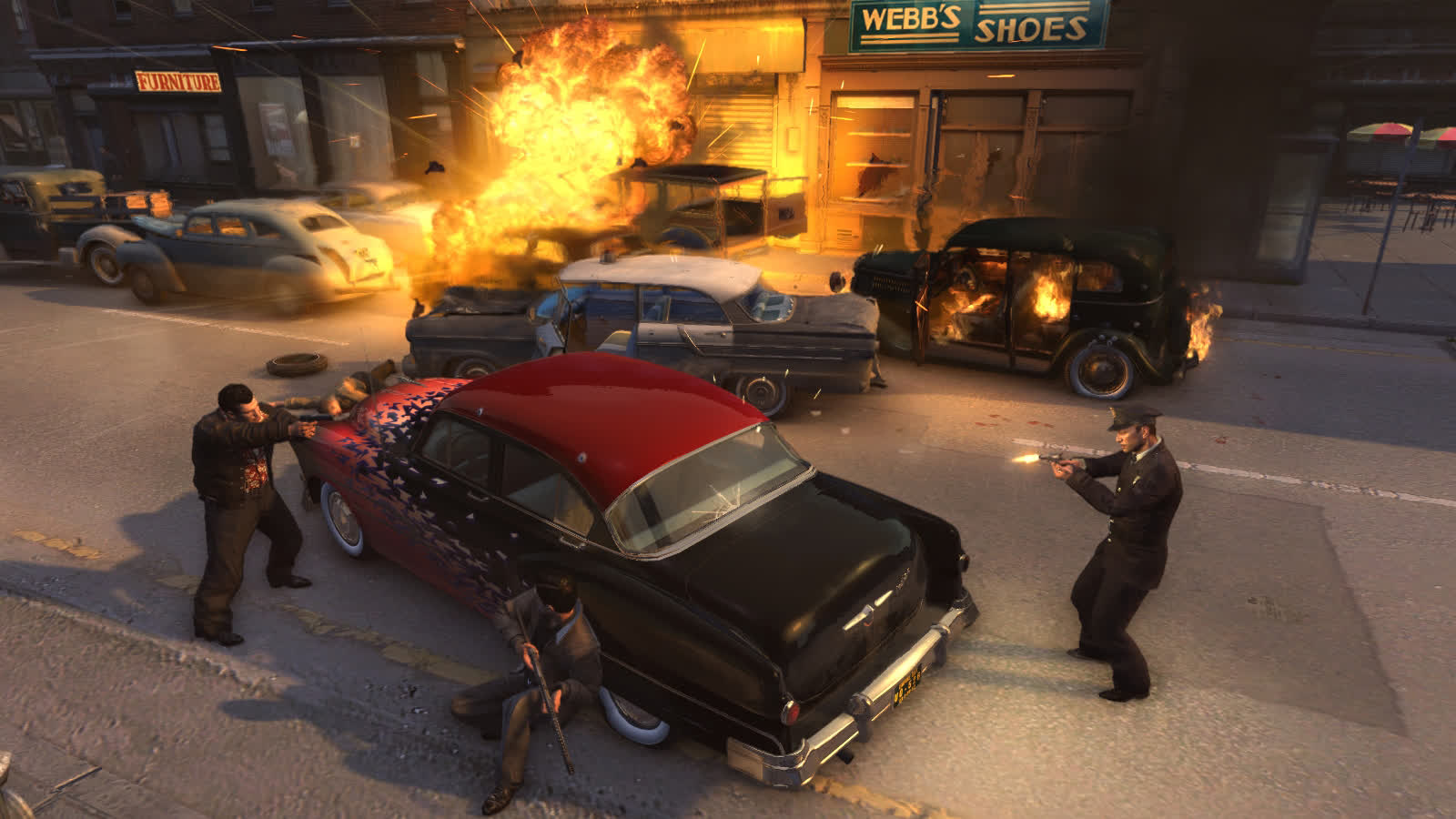Benchmarks: PhysX On/AA On (Dedicated PhysX)
The most devoted of PC gamers won't mind adding a second graphics card to offload PhysX processing. In this case we used a dedicated GeForce GTX 460 to handle the job. We re-tested Mafia II with PhysX enabled (high) on both Nvidia and AMD cards.
Note that this typically won't work for AMD users as the GeForce GTX 460 cannot be set to handle PhysX, however using a software mod (Hybrid PhysX mod v1.04ff) it is possible to set things up in proper fashion.

By adding in the GeForce GTX 460 to handle PhysX we were able to boost the performance of the GeForce GTX 480 by 24%, which is not that bad. The GeForce GTX 470 saw the exact same performance boost as frame rates went from 38fps to 47fps.
Surprisingly the GeForce GTX 460 did very poorly when adding a second card for dedicated PhysX with a mere 3fps bump. Older previous generation graphics cards such as the GeForce GTX 285 did well when paired with a dedicated PhysX card. The GeForce GTX 285, for example, saw a 23% performance increase.
The Radeon HD 5970 combined with the dedicated GeForce GTX 460 still only averaged 42fps. Not a bad result per se, but it's only a single frame faster than the Radeon HD 5870. Although the Radeon HD 5870 was able to beat the GeForce GTX 470 quite comfortably in all the non-PhysX tests, it was slower here regardless of the dedicated add-in board.
With the GeForce GTX 460 working in the background, the Radeon HD 5850 and 5830 cards were able to comfortably break the 30fps barrier. Even the Radeon HD 5770 and 4890 were able to render at least 30fps.

At 1920x1200 we find that the GeForce GTX 480 and 470 performance is still very strong with both cards rendering well over the required 30fps. However performance drops off sharply when going to the next fastest graphics cards being the GeForce GTX 460 and GeForce GTX 285, both only averaged 31fps.
The red team does much better at 1920x1200 with the Radeon HD 5970, managing to beat the GeForce GTX 470 this time. The Radeon HD 5850 scraped in with 31fps while the Radeon HD 5830 averaged just 30fps.

Now at my favorite resolution of 2560x1600 we see that the GeForce GTX 480 received only a small assist from its dedicated PhysX card with a small 2fps boost. We found a similar story when looking at the rest of the Nvidia range.
